- Home
- Ai Automations and Integrations
Ai Automations and Integrations

OpenAI (ChatGPT, Whisper, DALL-E) Upload a File Integration
$0.00
The OpenAI API provides endpoints for various state-of-the-art AI models like ChatGPT, Whisper, and DALL-E, which are typically used for natural language processing, speech-to-text, and image generation, respectively. Among these capabilities, OpenAI has introduced an 'Upload a File' endpoint, which allows users to upload files directly to the A...

OpenAI (ChatGPT, Whisper, DALL-E) Transform Text to Structured Data Integration
$0.00
```html Utilizing the OpenAI API for Text to Structured Data Transformation Unlocking the Power of OpenAI's API Transform Text to Structured Data The OpenAI API, including ChatGPT, Whisper, and DALL-E, provides an endpoint that facilitates the transformation of unstructured text into...

OpenAI (ChatGPT, Whisper, DALL-E) Message an Assistant Integration
$0.00
Utilizing OpenAI APIs for Solving Problems Utilizing OpenAI APIs for Solving Problems OpenAI's API provides access to powerful AI models like ChatGPT, Whisper, and DALL-E, which are capable of performing a variety of tasks. These models can be leveraged through the 'Message an Assistant' endpoint to solve problems across di...

OpenAI (ChatGPT, Whisper, DALL-E) Make an API Call Integration
$0.00
```html Understanding OpenAI API Capabilities Exploring the Potentials of OpenAI's API Introduction to OpenAI API The OpenAI API provides developers with the ability to integrate advanced AI models into their applications. This interface serves as a gateway to powerful tools such a...

OpenAI (ChatGPT, Whisper, DALL-E) Generate an Image Integration
$0.00
OpenAI's API - Image Generation Capabilities Exploring the Image Generation Capabilities of OpenAI's API Introduction to OpenAI's Image Generation API OpenAI provides a suite of powerful tools including ChatGPT for conversational AI, Whisper for speech recognitio...

OpenAI (ChatGPT, Whisper, DALL-E) Generate an Audio Integration
$0.00
OpenAI API Use Cases for Audio Generation Exploring the Potential of OpenAI's Audio Generation API OpenAI's robust API, known for capabilities such as ChatGPT, Whisper, and DALL-E, offers endpoints for diverse applications, including audio generation. The audio generation endpoint provides tools for cr...

OpenAI (ChatGPT, Whisper, DALL-E) Edit an Image Integration
$0.00
OpenAI's Edit an Image API Exploring the Capabilities of OpenAI's Edit an Image API OpenAI offers a range of powerful APIs that leverage artificial intelligence to accomplish various tasks. Among these is the "Edit an Image" endpoint provided by DALL-E, an AI system designed for image generation and manipulati...

OpenAI (ChatGPT, Whisper, DALL-E) Create a Translation (Whisper) Integration
$0.00
OpenAI's Whisper API - Create a Translation End Point OpenAI's Whisper API provides a powerful tool for developers to incorporate state-of-the-art machine translation and speech-to-text capabilities into their applications. The "Create a Translation" endpoint within the Whisper API is specifically designed to address the challenge of understand...

OpenAI (ChatGPT, Whisper, DALL-E) Create a Transcription (Whisper) Integration
$0.00
What can be done with the OpenAI (Whisper) Create a Transcription API Endpoint The OpenAI Whisper API endpoint allows users to transcribe audio into text. This cutting-edge machine learning model provides accurate speech-to-text capabilities, handling various tasks with ease. Here’s what can be done using the Create a Transcription (Whisper) AP...

OpenAI (ChatGPT, Whisper, DALL-E) Create a Moderation Integration
$0.00
The OpenAI API, with endpoints like ChatGPT, Whisper, and DALL-E, has a feature dedicated to content moderation called the "Moderation" endpoint. This feature plays a critical role in ensuring that content generated by or processed through the API adheres to certain community standards and guidelines. Below is a detailed examination of the capab...
OpenAI (ChatGPT, Whisper, DALL-E) Create a Completion (GPT-3, GPT-3.5, GPT-4) Integration
Integration

OpenAI (ChatGPT, Whisper, DALL-E) Create a Completion (GPT-3, GPT-3.5, GPT-4) Integration
$0.00
```html Understanding OpenAI API Endpoints What Can Be Done with OpenAI API's Create a Completion Endpoint? The OpenAI API offers various endpoints including Create a Completion, which opens the door to tapping into powerful language models like GPT-3, GPT-3.5, and GPT-4. These AI-driven models can perform a range of natura...

OpenAI (ChatGPT, Whisper, DALL-E) Analyze Images (Vision) Integration
$0.00
```html Exploring OpenAI's Vision API Exploring OpenAI's Vision API Introduction to the OpenAI Vision API The OpenAI Vision endpoint, part of the broader suite of APIs provided by OpenAI (which includes ChatGPT, Whisper, and DALL-E), offers a range of capabilities for image analysis. This powerful...

Google Cloud Vision Run Text Detection (OCR) within an Image Integration
$0.00
Applications of Google Cloud Vision API: Run Text Detection (OCR) within an Image The Google Cloud Vision API is a powerful tool that can analyze the content of images and provide insights depending on the user’s needs. One of the features it offers is the Optical Character Recognition (OCR) capability, which is accessible through the 'Run Text...
Google Cloud Vision Run Text Detection (OCR) within a File and Iterate the Result Array Integration
Integration

Google Cloud Vision Run Text Detection (OCR) within a File and Iterate the Result Array Integration
$0.00
Uses of Google Cloud Vision API: Run Text Detection (OCR) within a File and Iterate the Result Array The Google Cloud Vision API offers a variety of image recognition and processing capabilities; among these, the Optical Character Recognition (OCR) feature is particularly powerful. The text detection endpoint allows users to extract textual inf...
Google Cloud Vision Run Localizer for Object Detection within an Image and Iterate the Result Array Integration
Integration

Google Cloud Vision Run Localizer for Object Detection within an Image and Iterate the Result Array Integration
$0.00
Google Cloud Vision API: Object Detection and Localization Google Cloud Vision API: Object Detection and Localization The Google Cloud Vision API provides a suite of powerful image analysis tools that can perform various tasks like recognizing text, logos, landmarks, and much more. One of its capabilities includes the localizer for Object...
Google Cloud Vision Run Landmark Detection within an Image and Iterate the Results Integration
Integration

Google Cloud Vision Run Landmark Detection within an Image and Iterate the Results Integration
$0.00
Exploring Google Cloud Vision API - Landmark Detection Exploring Google Cloud Vision API - Landmark Detection Google Cloud Vision API offers a plethora of image analysis capabilities, one of which is the landmark detection feature. The endpoint "Run Landmark Detection within an Image and Iterate the Results" i...

Google Cloud Vision Run Label Detection within an Image Integration
$0.00
Uses of Google Cloud Vision API's Label Detection Feature The Google Cloud Vision API enables developers to integrate image analysis capabilities into their applications. One of its fundamental features is Run Label Detection, which is a powerful tool for understanding the content of an image. This API endpoint is capable of identifying a myri...
Google Cloud Vision Run Face Detection within an Image and Iterate the Result Array Integration
Integration

Google Cloud Vision Run Face Detection within an Image and Iterate the Result Array Integration
$0.00
Exploring the Use of Google Cloud Vision Face Detection API The Google Cloud Vision API provides powerful image analysis capabilities, including the ability to detect and analyze faces within images. The Run Face Detection within an Image endpoint of Google Cloud Vision API can be used for a variety of applications, where it processes an image ...
Google Cloud Vision Detect Potentially Unsafe or Undesirable Content within an Image Integration
Integration

Google Cloud Vision Detect Potentially Unsafe or Undesirable Content within an Image Integration
$0.00
Capabilities of Google Cloud Vision API for Detecting Unsafe Content Google Cloud Vision API is a powerful tool designed to give machines the ability to understand the content of images in a similar manner to human sight. One of the API's capabilities is the detection of potentially unsafe or undesirable content within an image. This feature ca...
Google Cloud Vision Compute Image Dominant Colors and Iterate the Result Array Integration
Integration

Google Cloud Vision Compute Image Dominant Colors and Iterate the Result Array Integration
$0.00
Applications of Google Cloud Vision API: Compute Image Dominant Colors Feature Google Cloud Vision API is a powerful tool that allows developers to incorporate image recognition capabilities within their applications. One of the features offered by this API is the ability to compute dominant colors in an image. This functionality can be used to...

Google Cloud Vision Run Handwriting Detection within an Image Integration
$0.00
Handwriting Detection with Google Cloud Vision API Using Google Cloud Vision for Handwriting Detection Google Cloud Vision API offers a powerful endpoint known as Run Handwriting Detection within an Image that provides the ability to detect and transcribe handwritten text from images. This feature utilizes adv...

ElevenLabs Create a Speech Synthesis Integration
$0.00
Speech Synthesis API Use Cases Exploring the Create a Speech Synthesis API Endpoint The Speech Synthesis API endpoint is a powerful tool that facilitates text-to-speech (TTS) conversion, enabling developers to create applications that can translate written text into spoken words. This API capability is instrument...

ElevenLabs Make an API Call Integration
$0.00
API Call Explanation The Usefulness of the "Make an API Call" Endpoint Application Programming Interfaces (APIs) serve as intermediaries allowing different software systems to communicate with each other. The "Make an API Call" endpoint, which is a ubiquitous feature in API-based systems, provides a way for developers to request specific ...
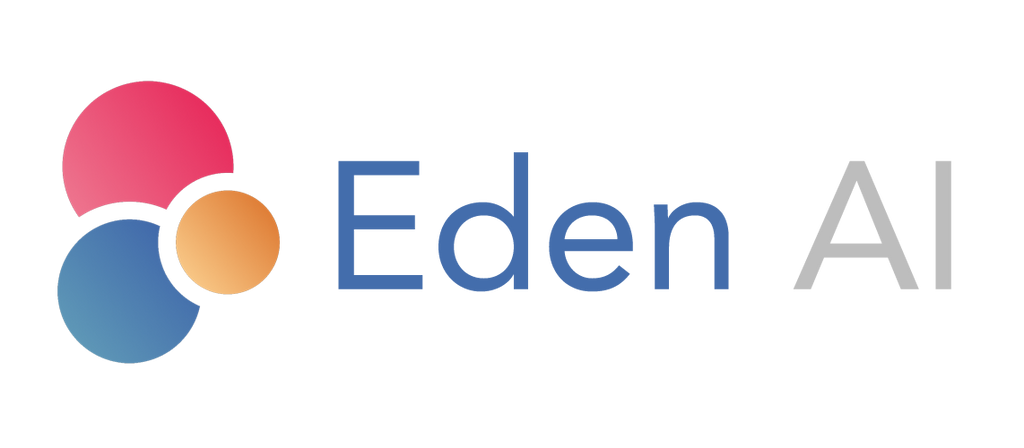
Eden AI Translate Text into another Language Integration
$0.00
Uses of the Translate Text into Another Language API Endpoint Language is at the heart of human interaction, and with globalization, the need for language translation has never been more critical. The Translate Text into Another Language API endpoint serves as a powerful tool to bridge communication gaps, enable cross-cultural interaction, and s...
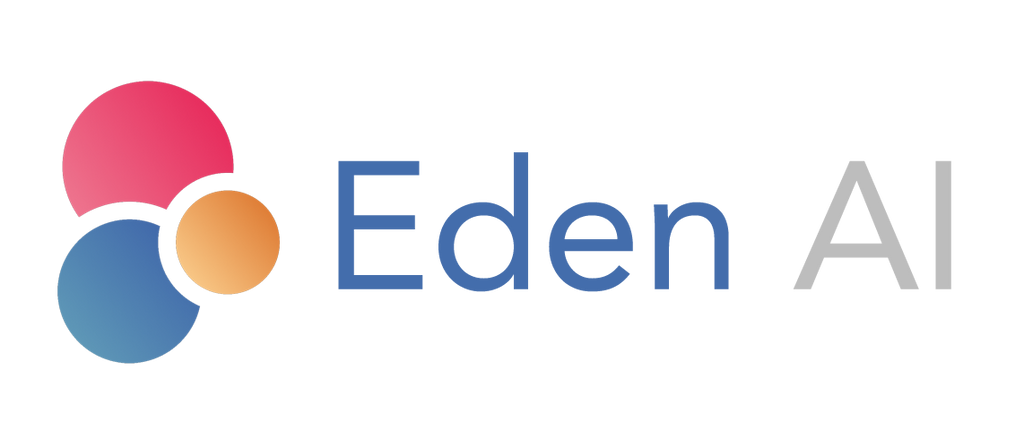
Eden AI Translate Documents Integration
$0.00
Functionality of the Translate Documents API Endpoint The "Translate Documents" API endpoint is designed to provide users with the ability to automatically translate entire documents from one language to another. This is a significant step forward in translation technology, allowing for greater convenience and efficiency when dealing with multi...
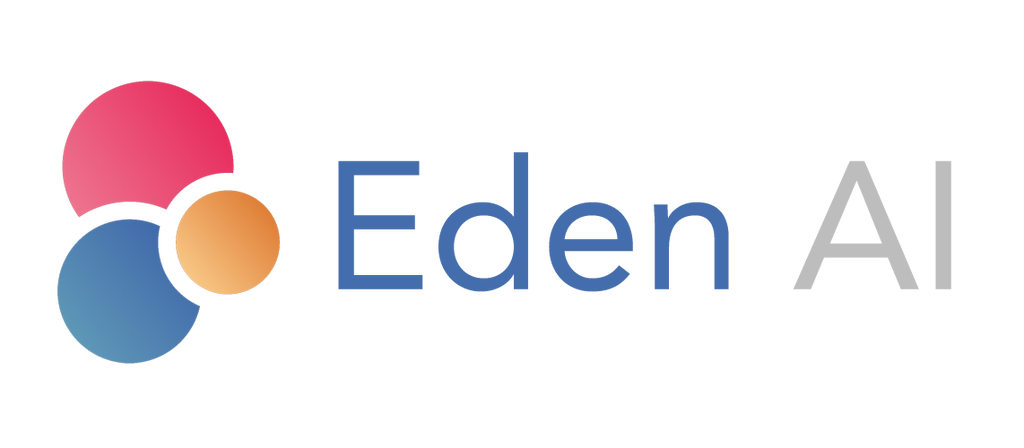
Eden AI Transcript Audio File into Text Integration
$0.00
The API endpoint "Transcript Audio File into Text" is a powerful tool designed for automating the process of converting spoken language within an audio file into written text, commonly known as speech-to-text or automated transcription. This capability can be applied to a broad range of applications, solving various problems in different fields....
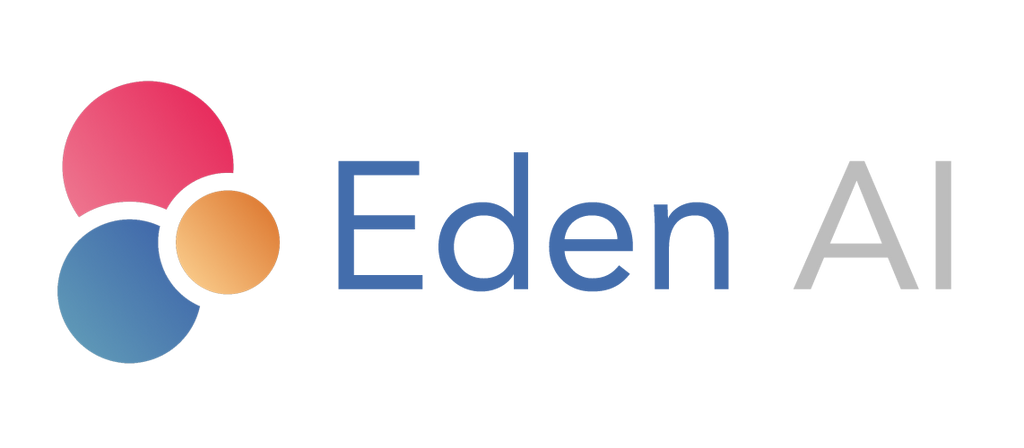
Eden AI Summarize a Text Integration
$0.00
The "Summarize a Text" API endpoint is designed to process a large body of text and distill it into a shorter version, retaining the most important points and key messages. This service can be utilized to address a variety of challenges related to managing and consuming vast amounts of information. Here is an overview of what can be done with th...
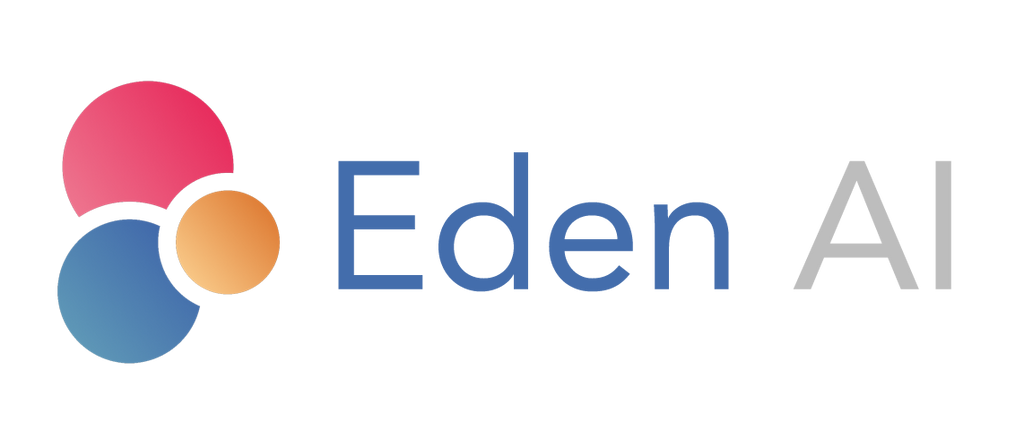
Eden AI Search Text Integration
$0.00
This API endpoint, "Search Text," can be implemented to perform a wide array of tasks involving text-based searches across a variety of applications and systems. The functionality provided by such an API can help solve numerous problems related to data retrieval, content organization, user experience enhancements, and more. Below are some examp...
Collections
- 0CodeKit Integrations
- Accounting
- ACH Processing
- Active Campaign
- Ai Automations and Integrations
- Aircall
- All Integrations
- Annuities
- ATS
- Auto & Home
- BI and Analytics
- Brand Management
- Bullhorn Integration Endpoints
- Business Infrastructure
- Business Operations
- Business Retirement Plans
- Business Systems
- Card Access
- CCaaS
- Clio Integrations
- Cloud Services
- Connectivity, MPLS, Private Line
- Cost Reduction
- CPaaS/SIP
- Customer Relationship Management
- Data Center
- Developer Platforms
- Development
- E-Commerce
- E-Commerce Software
- eREIT
- Field Service Automations and Integrations
- Finance Automations and Integrations
- Financial
- Fire Alarm Systems
- Fleet Tracking
- FTP Hosting
- Gift Card & Loyalty
- Google Sheets
- Graphic Design
- Health
- Healthcare Software
- HR and HCM Automations and Integrations
- HR Software
- Human Resources
- Implemenation
- Insurance
- Integrate RingCentral With Monday.com
- Integrations
- International
- Intrusion Systems
- Investments
- Invoicing
- Invoicing and Contract Software
- Lead Generation
- Learning Management
- Legal
- Legal Services
- Long Term Care
- Managed Investments
- Managed Services
- Marketing
- Marketing
- Marketing Automations and Integrations
- Micro Funding
- Mobile Payments
- Mobility/IoT
- Monday.com Integrations
- Mutual Funds
- Other
- Others Software
- Outsourced Sales
- Pay Per Click
- Payment Processing
- Payroll
- Phone Systems
- Photography
- Pre-Paid Legal
- Print & Promotional
- Process Implementation
- Product Management
- Productivity
- Productivity & Efficiency Improvement
- Project Management
- Recuritment
- Recurring Payments
- RingCentral Integrations
- Sales Software
- Sales Training
- SD-WAN
- Search Engine Optimization
- Security
- Security and IT Management
- Security Systems
- Sling Scheduling Features
- SMS Communication
- Social Media
- Social Media Management
- Telecommunications Automations and Integrations
- Term Life
- Top Products
- Twilio Integrations
- UCaaS
- Video Conferencing
- Video Production
- Video Surveillance
- Web Development
- Web Hosting
- Webinar & Screen Sharing
- Workflow Training
- Zoho
- Zoho CRM Integrations
- Zoho Email & Collaboration
- Zoho Finance
- Zoho HR
- Zoho Legal
- Zoho Marketing
- Zoho Sales
- Zoho Service
- Zoho Suites



























